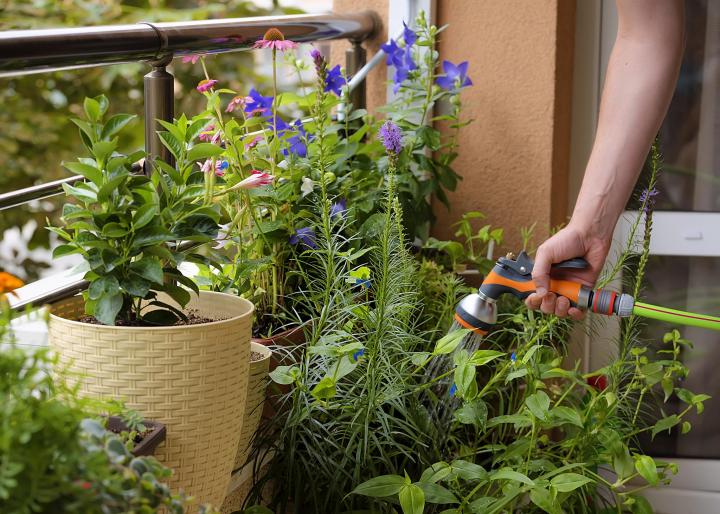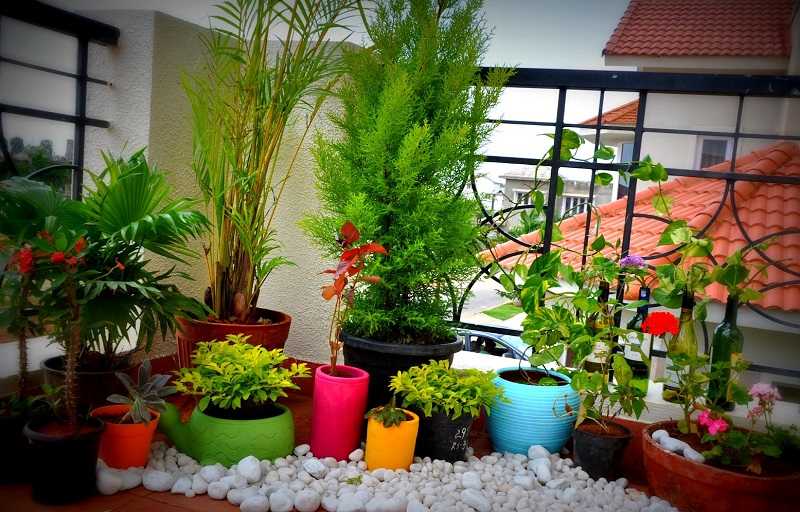Do you want to create balcony gardening on your balcony? Then you’ve come to the right place! As part of the guide to balcony planting for beginners, we’ll go over everything that you need to learn before establishing your balcony garden, as well as some ideas for what kinds of plants you might want to put in it.
Things to consider prior to starting the balcony garden
Beginning balcony gardening for novices requires extensive research and determination of the exact elements that will be necessary to construct the balcony garden that you envision for yourself. These include a variety of conditions such as the space available, sunlight, water, a budget, and the amount of time you are willing to devote. You would be able to identify what plants to cultivate and what materials you will need to put up your garden based on this information.
Choose the most appropriate plant for your new balcony garden

For selecting the appropriate plants to grow on your balcony, you may be now considering what to plant in the new balcony garden depending on the materials accessible to you. Following is a summary of the several kinds of plants that can be easily cultivated in containers, as well as ideas on what to plant in each category.
Flowers
Based on the conditions of your outdoor space, you can cultivate a wide variety of flowering plants on your balcony. Some plants require direct sunlight, but others require shade to thrive. Picking the perfect flowering plant for your balcony depends on the weather conditions there at the time of planting.
Decorative Plants
Decorative plants are ideal for use in indoor settings & thrive in balcony gardens, among other places. They can improve the appearance of the balcony garden. For the new balcony garden, here are a few low-maintenance beautiful plants to consider. Make certain to choose the appropriate one for your location based on the seasonal changes.
Food
If you want to plant some food in the balcony garden, herbs are the ideal option for novices because they are easy to cultivate and require little maintenance. They are simple to cultivate, require little maintenance and taste exceptionally fresh.
You can also use a modern balcony plant stand for your apartment garden.
Questions to consider when considering balcony and rooftop gardening
Are your balcony and rooftop capable of supporting the additional weight of pots filled with soil?
Terra cotta & ceramic pots are hefty, so you may need to utilize rice pots, plastics, or fiberglass containers, and fabric grows bags in conjunction with light soil mixes to accommodate their weight.
What method will you use to supply water to the plants?
If you are cultivating on a rooftop, hauling jugs of water is a significant distance to travel. You may also want to think about drip irrigation and self-watering containers for your garden. Consider purchasing a watering can that is possible to fill from the bathtub as an additional option. Is it possible that surplus water from the plants will fall on your neighbors below? Please be considerate and place saucers and trays under the plants to catch any excess water.
The finest plants to survive on a patio or balcony are those that are low-maintenance.
Read More: The History of the Baby Stroller from Then to Now
The most crucial thing to consider when selecting plants for the site is their suitability. Make no effort to accommodate anything unlikely to succeed. The amount of sunshine available is the most important consideration.
If your balconies face north or are partially shaded by nearby buildings for most of the day, low-light plants like coleus, fern, impatiens, hostas, & begonias are ideal choices for your balcony.



1 Comment
Pingback: Digital Signing of Documents Can Speed Up Your Sales | Let us Explain Why